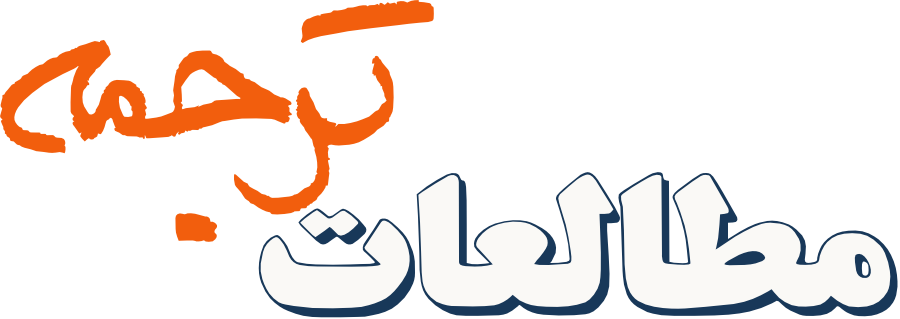روشی برای پژوهشهای خُردتاریخیِ ترجمه/مترجم: با تمرکز بر بافت ایران
چکیده
خُردتاریخ میتواند دو کارکرد در مطالعات تاریخیِ ترجمه/مترجم ایفا کند. کارکرد نخست عبارت است از یافتن مترجمان فراموش شده یا توجه به مسائل مغفول مانده در رابطه با ترجمه، مترجمان، رویدادهای ترجمهای، نهادهای ترجمه و غیره. کارکرد دیگر ایجاد امکان بازنگریِ تاریخهای نوشته شده در حوزه مطالعات ترجمه/مترجم است. دستیابی به این دو کارکرد از طریق بررسی ریزبینانۀ یک موضوع و بواسطۀ کشف و استفاده از منابع دست اولِ نادیده گرفته شده و بررسی نقادانۀ منابعی که قبلاً در نگارش تاریخ استفاده شدهاند میسر میشود. هدف مقالۀ حاضر ارائۀ روشی عملی برای پژوهشهای خُردتاریخیِ ترجمه/مترجم در ایران است. مقاله ابتدا به معرفی مختصر خُردتاریخ میپردازد. سپس، به دلیل اهمیت آرشیوها و منابع دست اول در پژوهشهای خُردتاریخی، انواع منبع معرفی میشود. در ادامه، برخی از پژوهشهای خُردتاریخیِ انجامشده در رشتۀ مطالعات ترجمه مرور میشوند و در پایان، مقاله به معرفی منابع دست اول قابل استفاده در پژوهشهای خُردتاریخی ترجمه/مترجم و توضیح روش میپردازد.
کلمات راهنما:
خُردتاریخ, مطالعات ترجمه, مطالعات مترجم, روش, آرشیو, منابع دست اولمراجع
Adamo, S. (2006). Microhistory of translation. In G. L. Bastin, & P. F. Bandia (Eds.), Charting the future of translation history: Current discourses and methodology (pp. 81–100). Ottawa: University of Ottawa.
Bandia, P. F. (2014). Response. The Translator, 20(1), 112–118.
Cohen, T. V. (2017). The macrohistory of microhistory. Journal of Medieval and Early Modern Studies, 47(1), 53–74.
De Vivo, F. (2010). Prospect or refuge? Microhistory, history on the large scale: A response. Cultural and Social History, 7(3), 387–397.
Donnelly, M., & Norton, C. (2011). Doing history. London & New York: Routledge.
Ginzburg, C. (1980). Morelli, Freud and Sherlock Holmes: Clues and scientific method. History Workshop, 9, 5–36.
Ginzburg, C. (1993). Microhistory: Two or three things that I know about it. Critical Inquiry, 20(1), 10–35.
Gomez, H. (2017). A closer look into the life of ordinary translators through unordinary sources: The use of obituaries as a microhistory tool to study translators and translation in Ohio. New Voices in Translation Studies, 16, 55–83.
Howell, M. C., & Prevenier, W. (2001). From reliable sources: An introduction to historical methods. Ithaca & London: Cornell University Press.
Levi, G. (1992). On microhistory. In P. Burk (Ed.), New perspectives on historical writing (pp. 93–113). Pennsylvania: Penn State University Press.
Levi, G. (2012). Microhistory and the recovery of complexity. In S. Fellman, & M. Rahikainen (Eds.), Historical knowledge: In quest of theory, method and evidence (pp. 121–132). Newcastle: Cambridge Scholars Publising.
Lundy, K. S. (2008). Historical research. In L. M. Given (Ed.), The SAGE encyclopedia of qualitative research methods (Vol. 1 & 2, pp. 395–399). California: Sage.
Magnússon, S. G. (2003). The singularization of history: Social history and microhistory within the postmodern state of knowledge. Joural of Social History, 36(3), 701–735.
McCullagh, B. C. (2000). Bias in historical description, interpretation, and explanation. History and Theory, 39(1), 39–66.
Munday, J. (2013). The role of archival and manuscript research in the investigation of translator decision-making. Target, 25(1), 125–139.
Munday, J. (2014). Using primary sources to produce a microhistory of translation and translators: theoretical and methodological concerns. The Translator, 20(1), 64–80.
Paloposki, O. (2016). In search of an ordinary translator: translator histories, working practices and translator–publisher relations in the light of archival documents. The Translator, 1–18.
Pearce-Moses, R. (2005). A glossary of archival and records terminology. (L. Baty, Ed.) Chicago: The Society of American Archivists.
Saldanha, G., & O’Brien, S. (2013). Research methodologies in translation studies. London & New York: Routledge.
Santoyo, J.-C. (2006). Blank spaces in the history of translation. In G. L. Bastin, & P. F. Bandia (Eds.), Charting the future of translation history: Current discourses and methodology (pp. 11–43). Ottawa: University of Ottawa Press.
Szijártó, I. (2017). What does microhistory look like today? In T. Robisheaux (Ed.), Microhistory today: A roundtable discussion (pp. 8–10). North Carolina: Duke University Press.
Tendler, J. (2013). Opponents of the Annales School. Hampshire: Palgrave Macmillan.
Ventresca, M. J., & Mohr, J. W. (2002). Archival research methods. In J. A. Baum (Ed.), The Blackwell companion to organizations (pp. 805–828). New Jersey: Wiley-Blackwell.
Downloads
چاپشده
ارجاع به مقاله
شماره
نوع مقاله
DOR
مجوز
Copyright Licensee: Iranian Journal of Translation Studies. This article is an open access article distributed under the terms and conditions of the Creative Commons Attribution–NonCommercial 4.0 International (CC BY-NC 4.0 license).





